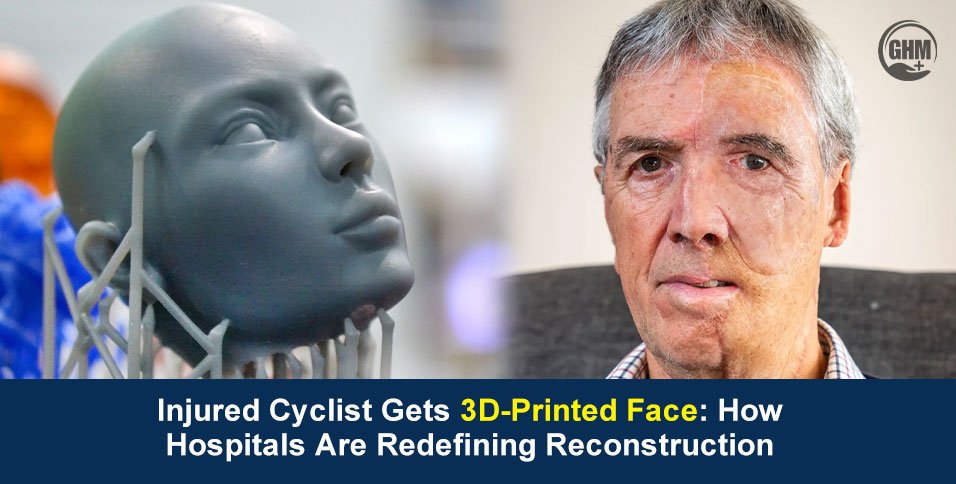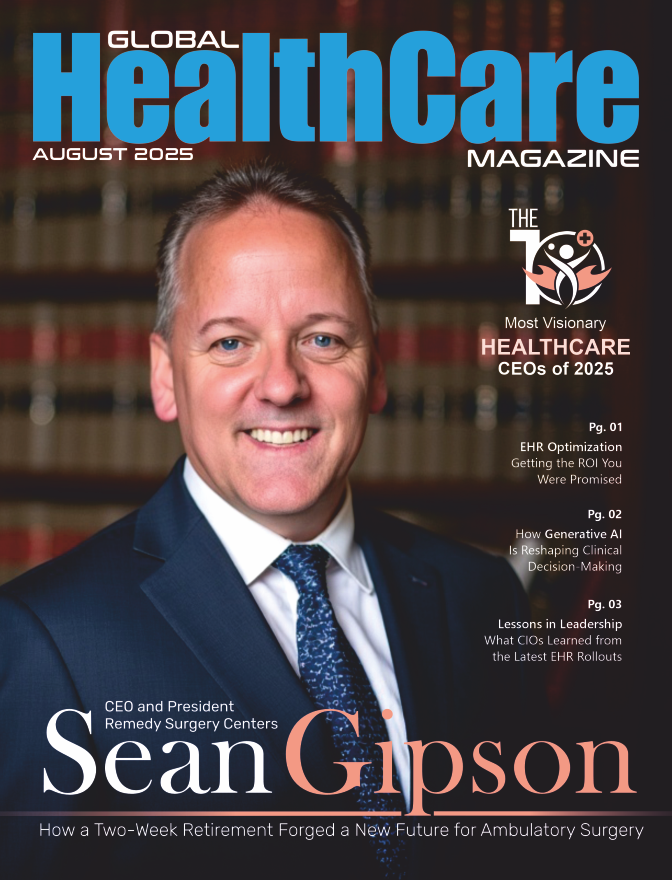A 75-year-old cyclist, Peter Maggs, received a new 3D-printed face after facial trauma in a devastating drink-driving crash.
Using advanced digital imaging and additive manufacturing technology, surgeons at the North Bristol NHS Trust recreated his features with remarkable precision.
This breakthrough is Britain’s first in a 3D-printed face. It marks a turning point in hospital-based reconstructive surgery, showing how science, data, and design are merging to rebuild not just bodies but lives.
How a 3D-Printed Face Is Made
Reconstructive surgery has always been part science, part art. But with 3D scanning and digital modelling, the process is now guided by algorithms and millimetre-level accuracy.
Here’s how it worked in this case. It is a process that may soon become standard across hospitals:
- 3D Scanning:
High-resolution scans captured the patient’s facial structure, mapping every contour and dimension.
- Digital Modelling:
Specialists used the data to digitally “mirror” the undamaged side of the face, ensuring symmetry and natural proportion.
- 3D Printing:
The model was sent to a medical-grade 3D printer, which produced a lightweight, biocompatible prosthesis.
- Fitting and Adjustment:
The printed implant was customised for comfort, stability, and skin integration.
According to the Bristol 3D Medical Centre team, this workflow drastically reduces surgery time, improves patient outcomes, and enables bespoke reconstruction that traditional prosthetics can’t match.
The Power Behind Additive Manufacturing in Hospitals
Additive manufacturing, more commonly known as 3D printing, creates objects layer by layer from digital files. In healthcare, this means printing everything from bone scaffolds to custom implants.
For facial trauma, the advantages are profound:
- Personalised Fit: No two faces are the same; digital modelling ensures perfect anatomical alignment.
- Faster Recovery: Shorter operation times mean reduced anaesthesia and hospital stays.
- Precision and Predictability: Digital plans minimise guesswork during surgery.
Dr Daniel Saleh, Consultant Plastic Surgeon at North Bristol NHS Trust, described the technology as “a paradigm shift in how we restore form and function after life-changing trauma.”
The Challenges of 3D Face Printing
While the results are remarkable, creating a lifelike 3D prosthetic face comes with technical and ethical challenges.
- Skin Tone & Texture: Even with advanced materials, it is difficult to match subtle variations of human skin.
- Movement: Unlike living tissue, 3D materials don’t move or age like skin, creating limitations in expression.
- Comfort & Durability: Heat, sweat, and friction can affect long-term wearability.
- Integration with Tissue: Unlike transplants, prosthetics lack biological fusion, which can affect realism and comfort.
Researchers are now experimenting with hybrid models, combining 3D-printed implants with tissue engineering, to overcome these barriers.
Can Every Hospital Have Access To 3D Printing
While Maggs’ 3D-printed face was made possible by cutting-edge NHS facilities, most hospitals globally are still far from adopting similar technology.
Key barriers include:
- Equipment Cost: Industrial-grade medical 3D printers can cost over £250,000.
- Training Gaps: Surgeons and technicians require advanced digital skills.
- Material Approval: Regulatory clearance for biocompatible materials varies across countries.
- Workflow Integration: Hospitals must coordinate between radiology, design labs, and surgical departments.
A recent report from the Global Additive Manufacturing in Healthcare Market estimates that while 3D printing in medicine is growing by over 18% annually, fewer than 10% of hospitals worldwide have in-house capacity for full-scale reconstructive production.
Why This NHS Case Matters Globally
The story of the injured cyclist with the NHS 3D-printed face is a glimpse of a new era in reconstructive medicine. It demonstrates how digital health tools can personalise care, reduce surgical risk, and restore confidence to trauma survivors.
Beyond trauma, 3D printing is being tested for jaw reconstruction, ear implants, and even skin grafts. As costs decline and training spreads, experts predict a future where 3D-printed prosthetics are as common as hearing aids or dental crowns.
A Human Story Behind the Technology
After months of isolation and recovery, Maggs says his new face gave him more than a physical identity. It gave him back his social life.
“In the early days, I wouldn’t go out,” he shared. “Now, I can look in the mirror and see myself again.”
That human impact is what makes 3D printing in medicine so powerful: it merges compassion with code, empathy with engineering.
Conclusion
This case of the NHS 3D-printed face is paving the way for larger innovations, a global redefinition of what it means to heal.
As hospitals adopt digital imaging and additive manufacturing, reconstructive surgery could move from reactive repair to proactive design, restoring not only appearance but dignity and identity.
In the next decade, as 3D scanning, digital modelling, and bio-compatible materials evolve, the dream of truly living, moving, and feeling prosthetics might no longer belong to science fiction.


















